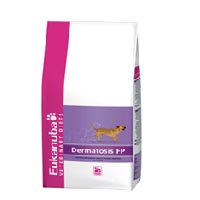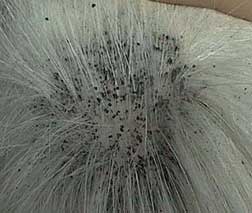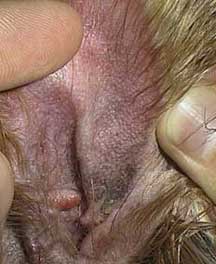Health Focus – Skin Problems
Skin Allergies in Dogs and Cats
This month we are focusing on skin allergies in dogs and cats. Skin allergies are one of the main reasons pets see the vet. It is also one of the most frustrating to diagnose and treat, as often animals are allergic to 12 or more different things at the same time, and drugs that suppress allergies, such as cortisone work well for the time they are on them, and then the allergies recur. Cortisone is also not without side effects such as weight gain, immunosuppression and hormonal disease. Skin allergies will drive you and your pet crazy as they rub, lick, bite and chew at themselves, sometimes pulling hair out and even sometimes removing the top later of skin to leave a large wet open area known as a Hot Spot (moist eczema).
Skin allergies can be caused by many different allergens (substances that cause allergies). The most common allergens in pets are fleas, grass, house dust mites, mould, spring pollen from trees, flowers and grasses, yeasts on the skin as well as food in some cases. Food allergies are less common than most people imagine.
Why are some animals allergic – and others aren’t? There are many reasons for this. It can be genetic – some breeds are allergy prone – Siamese cats get allergic asthma and terriers suffer from skin allergies. It can be environmental – some people find that when they move house, or their dog goes to kennels, that the allergies clear up. Exposure to dirt and contagious diseases also plays a role in allergies developing. This is known as the Hygiene Hypothesis – the dirtier the environment and the more contagious diseases a young animal picks up, the less likely they are to develop allergies later. Households that are too clean and use a lot of disinfectants, tend to have more allergic pets. The same is true for people – third world children aren’t generally allergic, but first world children are.
Seasonal allergies or Atopy
Seasonal allergies to grass and pollen are also known as atopy. These are the animals that get a rash every summer, treated with a course of cortisone by the vet, which gets rid of it completely while the animal is on the cortisone , then recurs, either the following year or throughout the season. Dogs tend to chew their paws, between the toes, and in light coloured dogs, the hair may go brown with saliva staining.
They also tend to lick or scratch on the chests and bellies and often develop very red underarms. Sometimes in more severe cases, the muzzle and the skin around the sides of the mouth may swell and go red, and sometimes the skin round the eyes swells, and they rub their eyes, causing hair loss. Cats with atopy can lick anywhere, but usually one sees scabs on the head and a bald patch on the belly on inside the legs. Sometimes they also lick long stripes of hair off the sides of their bodies.
Flea Bite Dermatitis
Flea bite allergy is extremely irritating. Pets develop a bumpy scabby rash on the back near the base of the tail. They may also scratch around their ears and sometimes under their bodies as well. If you part the hair at the base of the tail or put your pet on a white sheet of cardboard, then brush him, you will see small black pieces of flea dirt either at the base of the tail or on the card.
You don’t always need to see fleas to have a flea allergy. In animals that are allergic to fleas, the bite of one flea is enough to start them scratching, even if the flea is gone. The rule of thumb is: If there is eczema at the base of the tail you have more than a 90% chance of it being a flea allergy and you should apply long acting topical drops that last a month or more like Frontline (Fipronil), Revolution or Advantage® to kill the fleas. Products like Capstar (Nitenpyram) will kill all the fleas on your dog’s body but do not last more than 48 hours. Flea collars, shampoos, powders and dips work sometimes but not consistently. If you see many fleas, you also need to treat your environment with a flea spray to kill the egg and larval stages. Remember you are only seeing 5-10% of the fleas that are causing the problem on your dog. The rest are in your house, in the carpets, bedding , skirting boards, floor cracks etc. Long acting flea control programs include monthly administration of flea drops or Program (Lufeneron) (injection, oral or tablet form) to make the fleas sterile.
Allergy related Infection
Many animals get bacterial infections in their skin on top of an allergy. These are known as Pyoderma (more severe and deep) or Folliculitis (less severe). To tell the difference between an allergy and an infection, have a look at your pet’s skin – if you see only redness, or thickening of the skin, it’s probably an allergy. The moment you get weeping sores, raised lumps in the skin, pimples or circular areas of flaky skin that lose their pigment, then it’s an infection. In most cases, it’s bacterial, but you may also see similar changes with mange and fungal infections. Your vet will be able to tell the difference using a skin scraping or by shining a UV light on the skin. Bacterial infections are even more itchy than allergies, and they don’t respond well to cortisone. Long courses of antibiotics are needed for deep seated infections – three weeks or longer is quite normal. These antibiotics are often combined with low doses of cortisone to stop the animal scratching and irritating itself so it can heal.
Ear Disease
Recurring ear infections (otitis) can also be a sign of allergic skin disease. When a dog gets a rash on its belly, the rash is well ventilated and usually the skin is dry then, but if that same dog gets a rash in it’s ears, the ear canal is not well ventilated, and in hot humid conditions, a rash in the ear can turn into a nasty infection. Both yeasts and bacteria that cause ear infection thrive in moist, warm environments. Dogs with ear infections shake their heads a lot. They may also scratch at the ears and make a groaning noise whilst scratching. The ears will be hot and painful and sometimes with all the shaking they will develop a blood blister between the layers of skin and cartilage of the ear – this is called an Othaematoma or Aural haematoma. The ears may also have a nasty sour smell, and the ear canal can be filled with yellow to brown coloured pus. They need to be cleaned out by a vet and a smear taken of the pus to determine if it is bacterial or yeast in origin, and then treated with ear drops, oral antibiotics or antifungals and possibly cortisone if allergy related.
Food Allergies
Many food allergies tend to show up as itchy ears and if otitis is a recurring problem, I would recommend switching to a hypoallergenic diet. In cats many food allergies also show up as scabbing on the head in front of the ears. Food allergies in dogs can look like any other allergy and animals can develop allergies to a food they have eaten for years as well as to a brand new food.
Diagnosis
To start diagnosis, first rule out everything else such as mange, lice, fleas, Pyoderma, Folliculitis, ringworm and other fungal infections, some immune conditions, hormonal conditions and some skin cancers. Skin scrapings are done to check for mange and lice and fleas can be picked up in the coat. Skin biopsies and blood tests are sometimes done to differentiate the other diseases. Once other diseases are ruled out, then further tests and trials can be performed.
Although food allergies are uncommon, most vets recommend a dietary trial of a low allergen or hypoallergenic food for at least 2 months. During this time the dog or cat must have NOTHING else to eat – no milk, no treats, no dental chews or supplements, no vitamins and no table scraps. If the dietary change helps, then the pet stays on that diet for the rest of it’s life. If it only helps a little or not at all, allergy testing can be done.
Two common types of allergy tests are available – the intradermal test, where small amounts of multiple allergens are injected into the skin and compared to a baseline value and from the size of the reaction that develops, one can see if your pet reacts to a certain allergen. This is used widely in the USA but is not considered to be as accurate as a blood test where antibodies against allergens are measured in a laboratory. This test will tell you exactly what your pet is allergic to. Different testing panels are also available for different countries.
Treatment

Once an allergy has been diagnosed, it needs to be treated. The first thing is to make the dog more comfortable. About twenty years ago, the mainstay of therapy for allergies was cortisone, but nowadays, with so many negative side effects of cortisone being known, it is felt that it is best to try to use as little cortisone as possible, while still keeping the animal comfortable. Putting an animal onto a diet for skin disease often helps. Zero allergen diets exists for animals with food allergies, such as the Royal Canin Hypoallergenic. Thus a small amount of cortisone is sometimes used, together with anti histamines, omega 3 and 6 fatty acid supplementation, shampoos and ointments to soothe the skin, and to control infections, as well as antibiotics if bacterial infection is present. Cyclosporin is a relatively new drug specifically for atopy and is marketed under the trade name “Atopica” in some countries. It also suppresses an overactive immune system, allowing allergy control. It can be quite a bit more costly than cortisone but has far fewer side effects. Hyposensitising injections are used when the animal has had blood tests for allergies. Small amounts of allergens are injected over about six months, to make the body “tolerant” to these allergens. It has a positive effect in 60% of animals, with some making a full recovery and others a degree of improvement. 40% do not improve unfortunately.
References
1 http://www.entdocs.com/catallergy.htm
2 http://www.merckvetmanual.com/mvm/index.jsp?cfile=htm/bc/71600.htm






Leave a Reply
You must be logged in to post a comment.